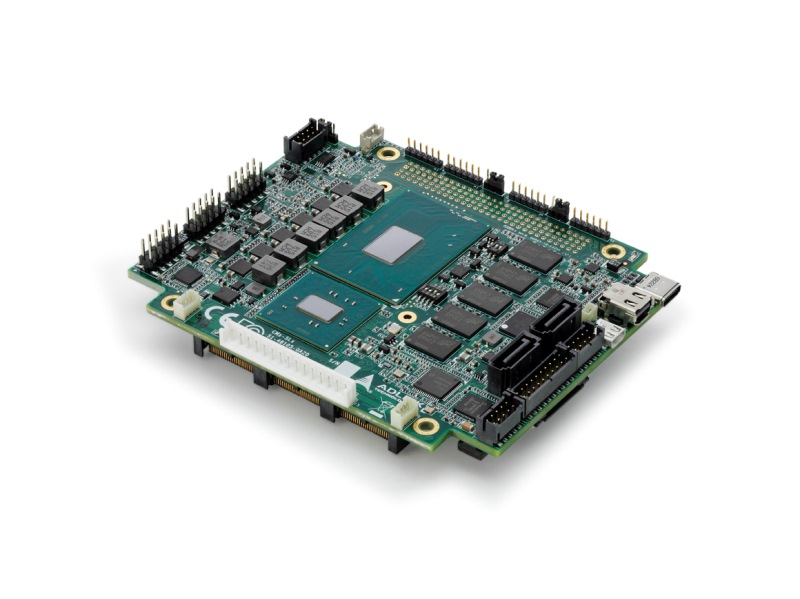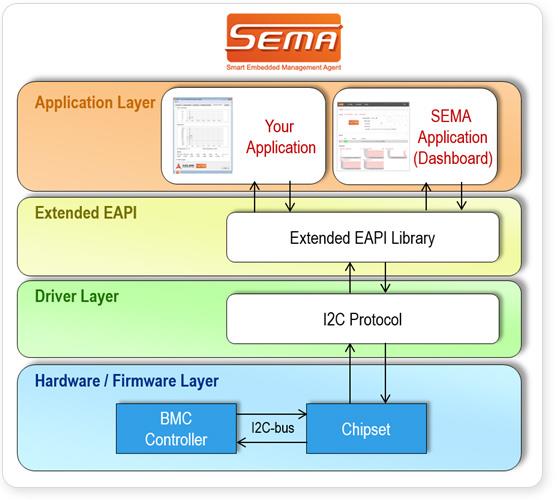Product of the Week: ADLINK’s CMx-SLx Intel® Xeon®-Powered PCI/104-Express SBC
February 01, 2022
Sponsored Story

High-level processing and extreme reliability are two precursors for AI in mission-critical edge applications. And that means blending the old with the new.
You can find both in ADLINK’s CMx-SLx, a high-performance PCI/104-Express single-board computer based on dual-core 6th generation 1.9 GHz Intel® Core™ i3-6102E or 2.7 GHz Core™ i3-6100E processors, or a quad-core Intel® Xeon® E3-1505L v5 that clocks at 2.8 GHz with Turbo Boost. Each of these is accompanied by an onboard Intel® CM236 chipset.

The high-end CPU performance, Intel® Hyper-Threading Technology (Intel® HT Technology) that allocates two threads per core, and integrated Intel® HD Graphics 530 engines allow these embedded processors to run advanced graphics and machine learning workloads at the edge. Moreover, it can perform these alongside other embedded processing tasks on the same platform, thanks in large part to integrated support for Intel® Virtualization Technology (Intel® VT-x) on the Skylake H devices.
Still, the processors consume just 25W, 35W, and 25W, respectively, which allows developers to fold the CMx-SLx into power-constrained edge system designs across -0ºC to +60ºC (standard) or -40°C to +85°C (extended) operating temperature ranges.
That’s the newer. The more mature part of the CMx-SLx is courtesy the PCI/104-Express standard, which was released in 2008 but has roots all the way back to the beginnings of the PC/104 specification in 1992. This permits 4x PCIe x1 and 1x PCIe x16 lanes to be run along a stackable interface per the PCI/104-Express architecture.
Other supported signals include:
- 2x GbE LAN
- 2x SATA 6 Gbps
- 1x USB 3.1, 6x USB 2.0
- 3x DDI
- 2x COM
- 8x GPIO
Added security is also available via a trusted platform module (TPM).
The CMx-SLx in Action
We briefly mentioned the integrated graphics unit of the CMx-SLx onboard processors, but for many edge systems developers working on AI or vision-centric applications, this is a key highlight.
Featuring Intel’s 9th generation integrated graphics core, the Intel® HD Graphics 530 engine features ample video encode/decode acceleration thanks to a HEVC/VP8/VP9/AVC/MPEG2 hardware codec. Among other things, this helps facilitate simultaneous triple display output across the CMx-SLx 1x micro HDMI, 1x mini DisplayPort, and 1x 18/24-bit single-channel LVDS channels.
The graphics core enables support for multimedia standards such as OpenGL 5.x, OpenCL 2.x, DirectX 2015, DirectX 12, DirectX Video Acceleration (DXVA), Intel® Clear Video HD Technology, and so on.
Of course, all of this video and imaging data means increased memory and storage requirements, which the CMx-SLx meets in the form of 8-16 GB of surface-mounted DDR4-ECC RAM and support for a range of SLC- or MLC-based SSD storage devices with up to 64 GB of capacity.
The module’s fail-safe 16 MB SPI EFI BIOS features a CMOS backup and remote console via Intel® Active Management Technology version 11 (Intel® AMT 11.00) support. The CMx-SLx is also backed by ADLINK’s Smart Embedded Management Agent (SEMA®), an intuitive command-line-style interface that makes use of a board management controller and extended APIs to simplify module monitoring, control, and analytics for users.

Getting Started with ADLINK’s CMx-SLx SBC
For those in need of high compute density on a platform that blends modern with years of proven operation, the ADLINK CMx-SLx is being sold through a host of distributors and value-added resellers. You can also request a quote directly from ADLINK, then start to familiarize yourself with the BSP and Drivers.
However, if you’re still looking for more information on how the PCI/104-Express module can transform your edge computing system design, extensive technical resources are available for the CMx-SLx, including online manuals, articles, a data sheet, and more. You can find these on www.adlinktech.com or in the resources section below.
Additional Resources:
- ADLINK CMx-SLx Product Page: www.adlinktech.com/Products/PC104SBCs/PCI104-Express/CMx-SLx
- ADLINK CMx-SLx Data Sheet: www.adlinktech.com/Products/Download.ashx?type=MDownload&isDatasheet=yes&file=1700%5cDatasheet_PC104_CMx-SLx_20220124.pdf
- ADLINK PC/104 Solution for Safeguarding Rail Solution Brief: www.adlinktech.com/Products/DownloadPublication?lang=en&ID=1306&pdNO=1700
- ADLINK PC104 SBC “Optimized Versatility” Brochure: www.adlinktech.com/Products/DownloadPublication?lang=en&ID=934&pdNO=1700
- Stackable PC/104 in Industrial System Design: www.adlinktech.com/Products/DownloadPublication.aspx?lang=en&ID=323&pdNO=1700
- “Tower in a Teacup: How the Small Form Factor Transition is Reshaping Embedded and Military Computing” Whitepaper: https://www.adlinktech.com/Products/DownloadPublication.aspx?lang=en&ID=1042&pdNO=1700




